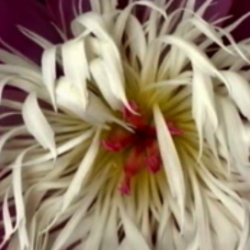Source Institutions
Source Institutions
Add to list Go to activity
Activity link broken? See if it's at the internet archive

In this activity, learners perform an experiment to find out what determines a flower's color. Learners extract petal juice, use acid and base indicators, and observe chemical reactions to investigate how the amount of acid or base influences the color of a flower petal.
- 5 to 10 minutes
- 45 to 60 minutes
- $10 - $20 per group of students
- Ages 11 - 14
- Activity, Experiment/Lab Activity, Lesson/Lesson Plan
- English
Quick Guide
Materials List (per group of students)
- Red, blue and purple flowers with large petals
- Ziploc bags
- Hammers
- Water
- Clear plastic cups
- Teaspoons
- Empty white Styrofoam egg cartons
- Droppers
- Bottle of vinegar
- Baking soda
Subjects
-
Life Sciences
- Cells
-
Diversity of Life
- Plants
-
Physical Sciences
-
Chemistry
- Chemical Reactions
- Acids and Bases
- Solutions
-
Vibration and Waves
- Light and Optics
-
Light and Optics
- Sunlight and Color
-
States of Matter
- Gases
-
Structure and Properties of Matter
- Elements and Periodic Table
-
Chemistry
-
The Nature of Science
-
The Scientific Process
- Conducting Investigations
- Formulating Explanations
-
The Scientific Process
Informal Categories
- Gardening
- Nature and Environment
Audience
To use this activity, learners need to:
- see
- see color
- touch
Learning styles supported:
- Involves hands-on or lab activities
Other
Includes alignment to state and/or national standards:
This resource is part of:
Access Rights:
- Free access
By:
- Education, Science Friday
Rights:
- All rights reserved, Science Friday, 2010
